Bakers, get your aprons - the Ankarsrum stand mixer is like nothing I've ever tested
Forget stand mixers being bread and butter, this is a cinnamon roll tray
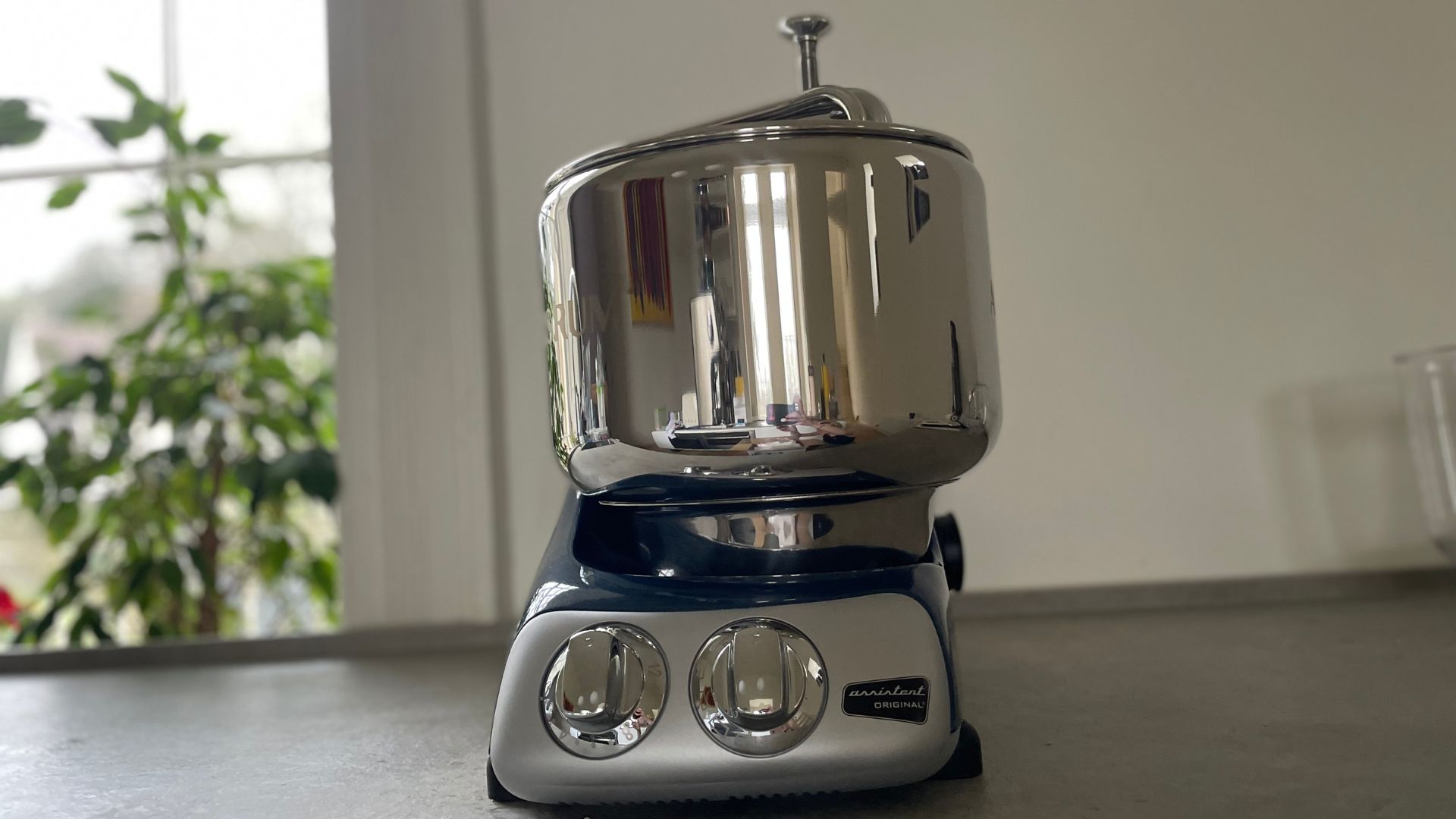
If you're serious about baking (especially bread), this stand mixer is perfect. It's big and industrial, so better for large batches and versatile bakes. It'll please the ambitious amongst you, but beginners might need a more simple place to start
-
+
Incredible build-quality
-
+
Professional power and capacity
-
+
Versatile, technical attachments
-
+
Extensive ange of colour options with a thoughtful design
-
-
Larger than some people need
-
-
Could be too much for beginners
-
-
Expensive investment if you won't use all the features
Why you can trust Woman & Home

Swedish bread, buns, and pastries are famously impressive. Even if you haven’t been to the country, if you’ve admired a cinnamon knot in Ole & Steen, you’re a fan of their work. I always thought that the secret behind their baking success was something heritable, passed down in the genes. However, I recently discovered the Ankarsrum Stand Mixer and I think I’ve worked out their secret.
There’s no doubt that this is one of the best stand mixers on the market, but it’s not quite like any of the others. This looks complex, with its spinning bowl and various attachments, but the bread that it creates is like no other.
The bowl reacts to the load and adjusts its power to suit your baking. It can knead 5kgs of dough without rocking off the counter and I would trust it with making a wedding cake too. Serious bakers, get your aprons. I might have the best news you'll hear all year.
Specifications

| Dimensions | 46 × 32.7 × 44 cm |
| Weight | 13 kgs |
| Material | Stainless steel, Tritan, chrome-plated zinc |
| Capacity | 7-litres |
| Power | 1,500 watts |
| Attachments | stainless bowl, dough roller, dough knife, spatula, dough hook, balloon whisks, shortcrust dough hook and proving lid |
Unboxing
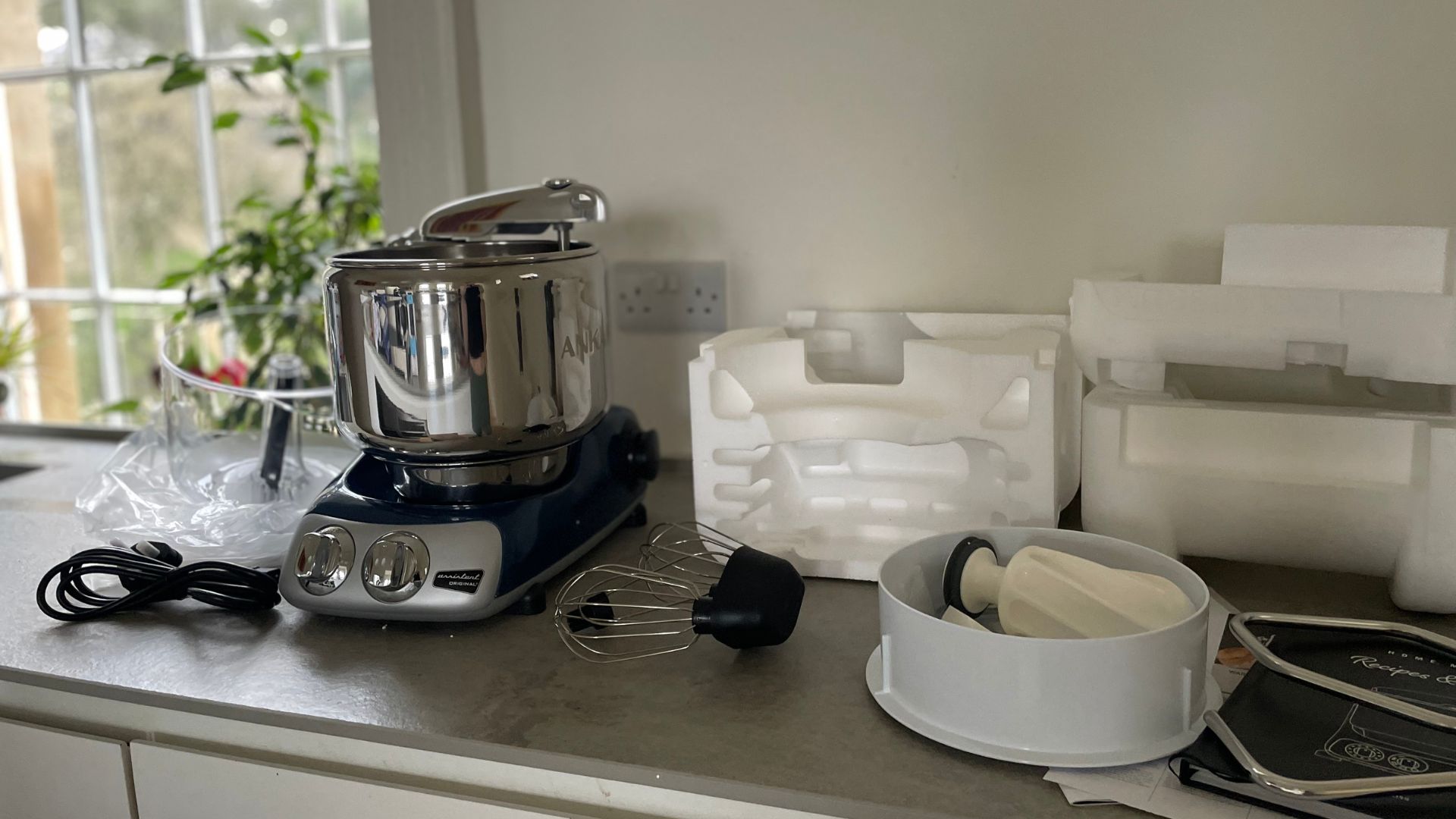
The Ankarsrum's box is no bigger than a Kenwood or a KitchenAid’s, which is surprising given the extras that they pack in. You’ll get two bowls: one stainless steel and one clear plastic whisking bowl, as well as a lid, balloon whisks, single-wire cookie beaters, a dough hook (for kneading), a dough knife (for scraping), a scraper, a dough roller, and a lid (which you can use for keeping things tidy, as well as for proofing your dough.
I test stand mixers for a living and even I was a little intimidated by the look of all the parts on my counter. However, Ankarsrum does something very clever and very generous too. They give you a hardback cookbook, with recipes that make use of each and every attachment. The suggestions are all delicious and simple to follow, so it’s an easy and exciting place to start.
Who would it suit?
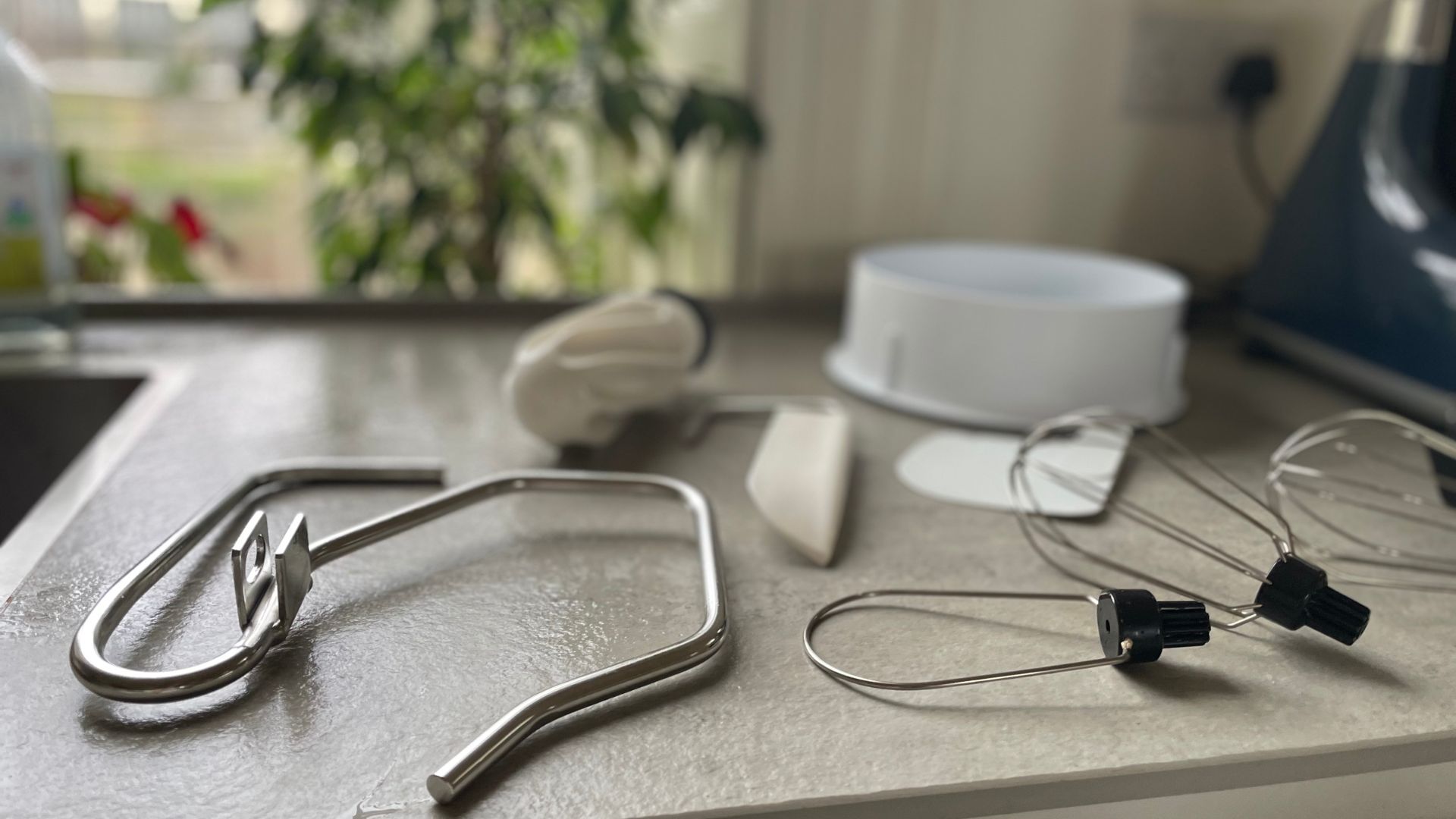
Ankarsrum makes no secret of the fact that this is a stand mixer designed for bakers. It looks like serious stuff, because it is. The huge bowl and range of different bread attachments cover all bases, meaning that this can knead the tough doughs, even the ones that would make KitchenAids quake. If you’re a numbers person, I can put this power into perspective. The Ankarsrum has a 1,500-watt motor, which is nearly double the most powerful 800-watt Kenwood alternative. I said it was serious.
I’ve got some more numbers for you too. The reason this is popular amongst enthusiastic home bakers is the capacity. The biggest KitchenAid that I’ve recommended on here is 6.6 litres (which provides enough capacity for 72 cupcakes worth of mix). The Ankarsrum bowl can take 7 litres, which means that you can make big batches of dough in a more secure and stable mixer.
Normally, this would make me lean towards recommending smaller homes with fewer demands to give this a wide berth, but the Ankasrum is cleverly designed to work just as well with small batches as it will with bigger ones too. Instead of having a planned head that moves around the bowl, the bowl rotates. This means that the Ankasrum has the most thorough coverage and mixing of any stand mixer that I’ve tested. Ever.
Part and parcel of the professional tag is that this comes with more of a price tag as well as a learning curve. You'll get used to it quickly and the durable build quality is worth the investment for serious bakers, but that does make it more exclusive and possibly slightly more intimidating for newer bakers.
If you're a keen bread baker and batch cook, this stands above the rest. However, if you're planning on taking a more casual, savvy approach to baking, there are cheaper, lighter models on the market.
What is it like to use?
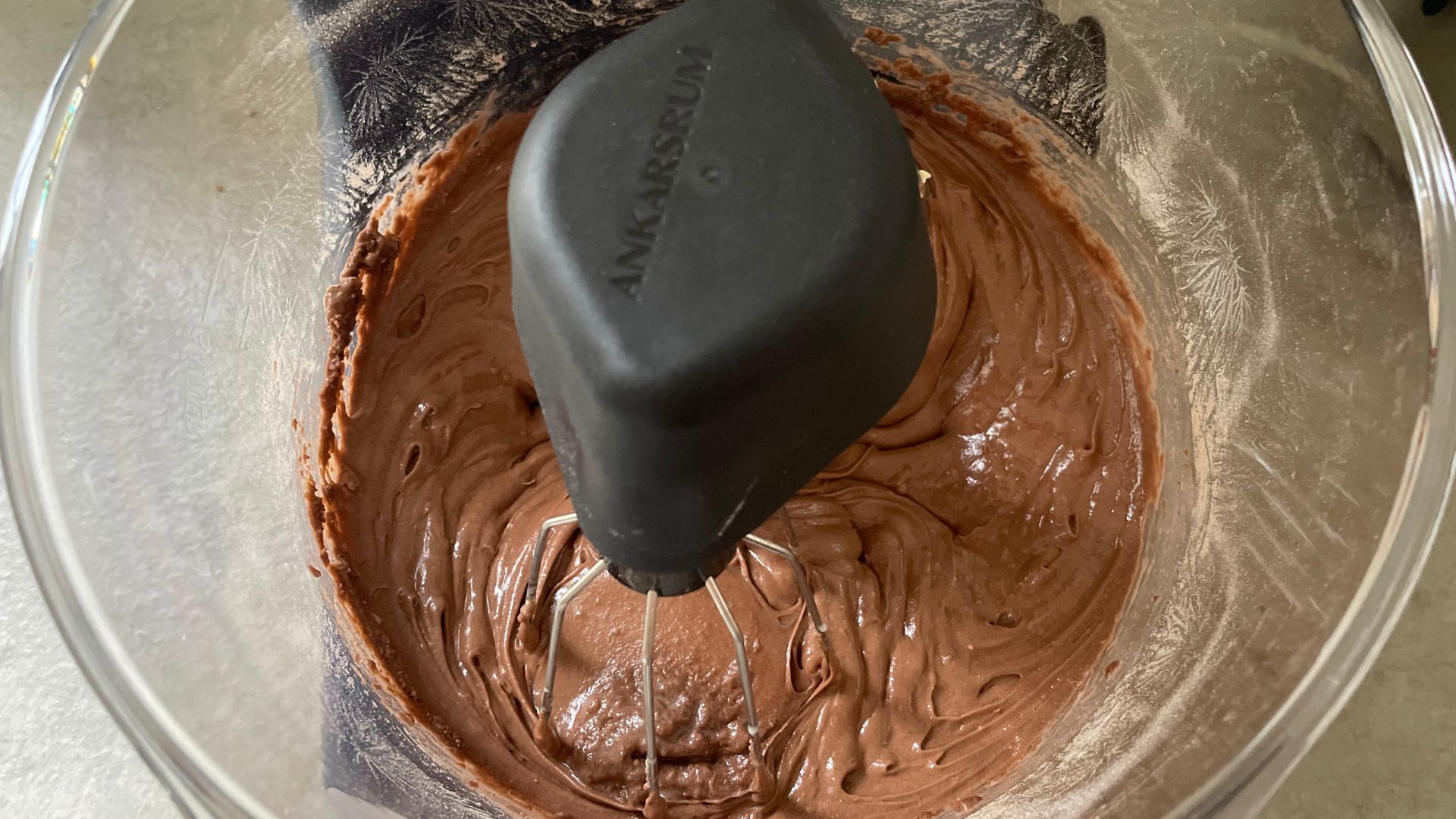
In spite of the different accessories, which can look quite intimidating, the Ankarsrum is very simple to use. There are two dials: one will turn the stand mixer on and off and the other adjusts the spinning speed. My one note is that the bowl spins, which can seem quite lethal to begin with. Whilst you will need to keep your hands safe, especially if you have little ones, I tested out the bowl's resistance and you can pull it to a stop if you need to.
That's all I can say without delving into the details of all of my tests. It was very exciting (and delicious) work.
Test 1: cake

The beaters that come with the Ankarsrum are designed specifically for batters. I switched out the stainless steel bowl for the clear whisk bowl and fitted my double balloon whisks on the central rotation piece. I was a little apprehensive about two features: the clear bowl (this would either be really handy or a messy liability) and the central rotation piece. The mechanisms of the Ankarsrum are different to many of the other stand mixers that you'll be used to, so it can be hard to trust. Both of my reservations were needless; the clear bowl is handy for making sure everything is well mixed (and it's surprisingly satisfying) and the balloon whisks work quickly, quietly, and efficiently.
My standard test for beaters is making a chocolate cake. I started creaming butter and sugar together. The Ankarsrum needed only one minute before the butter and sugar had become one, fluffy mix. I added in the rest of my recipe: flour, cocoa, eggs, baking powder, and vanilla and the whisks effortlessly incorporated everything together. The results looked silky and smooth - there wasn't a lump in sight.
This batter was enough for two large cake tins, which is about what you'd want for a birthday cake or centrepiece. If, however, you made a smaller batch of mini bakes, you'll need to do a little extra work. I halved the recipe and found that I needed to do a little scraping down the sides of the bowl. It wasn't really a problem, but it's clear that this is better at bigger tasks.
Test 2: bread
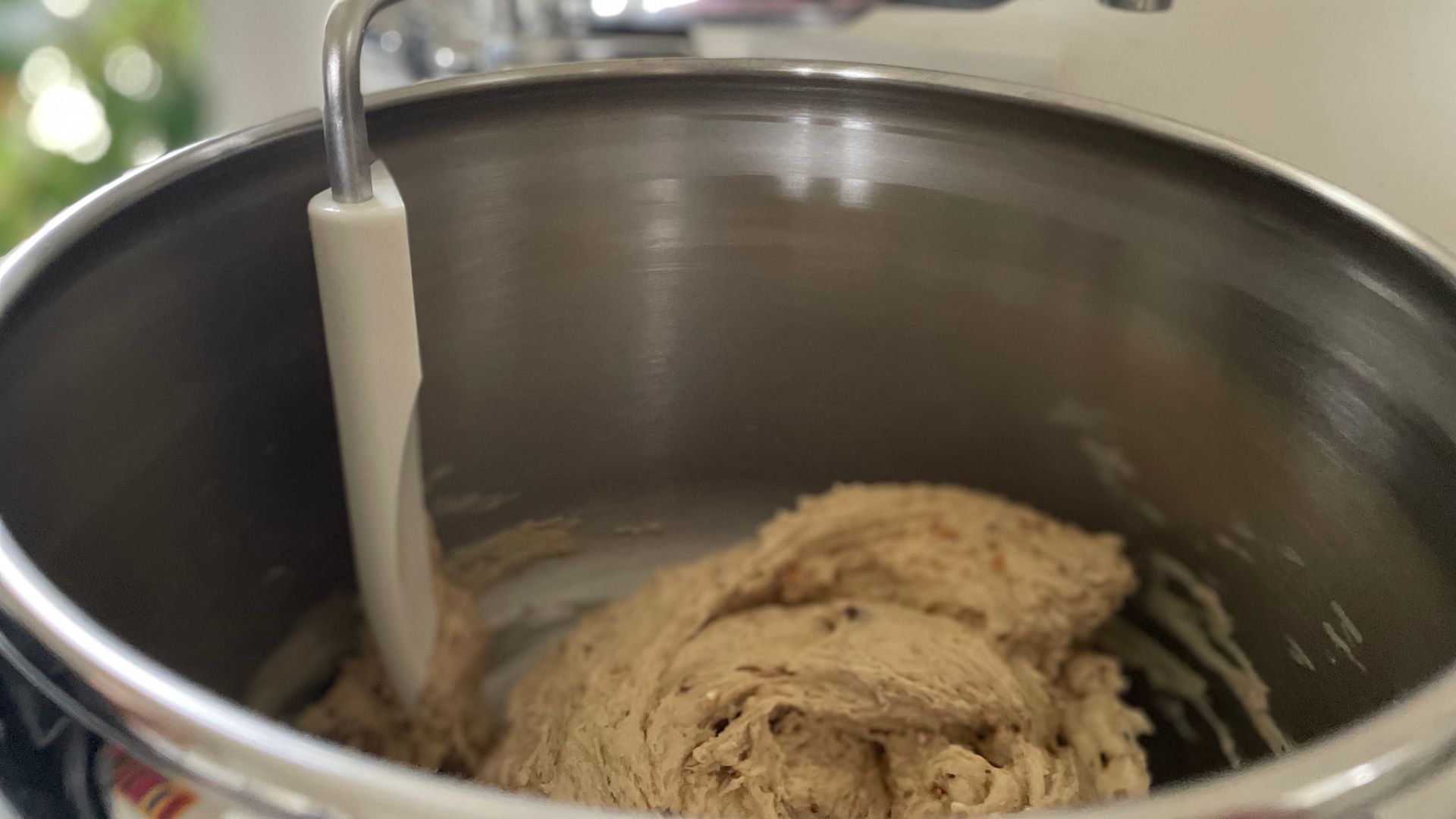
You could say that this is the Ankarsrum's bread and butter if you didn't mind a bit of a pun. The Ankarsrum's rotating stainless steel bowl and multiple accessories (the roller and scraper system) are perfect for kneading doughs, both wet and dry. I found that the better results were high-hydration doughs and bigger batches, so my classic white, sourdough, and brown loaves were made perfectly.
The first test that I ran was on brown bread, which I let the machine work for five minutes. The arm is very gentle, which means that the bread reacts as if it's being hand-kneaded. I could feel a good amount of elasticity built up in the dough, showing that the gluten was effectively growing.
The roller and scraper aren't actually that different from a dough hook, except that they look like different attachments. Once you've got used to how these look and handle, it's incredible. I've been making all my bread in this completely religiously.
Test 3: whipped cream
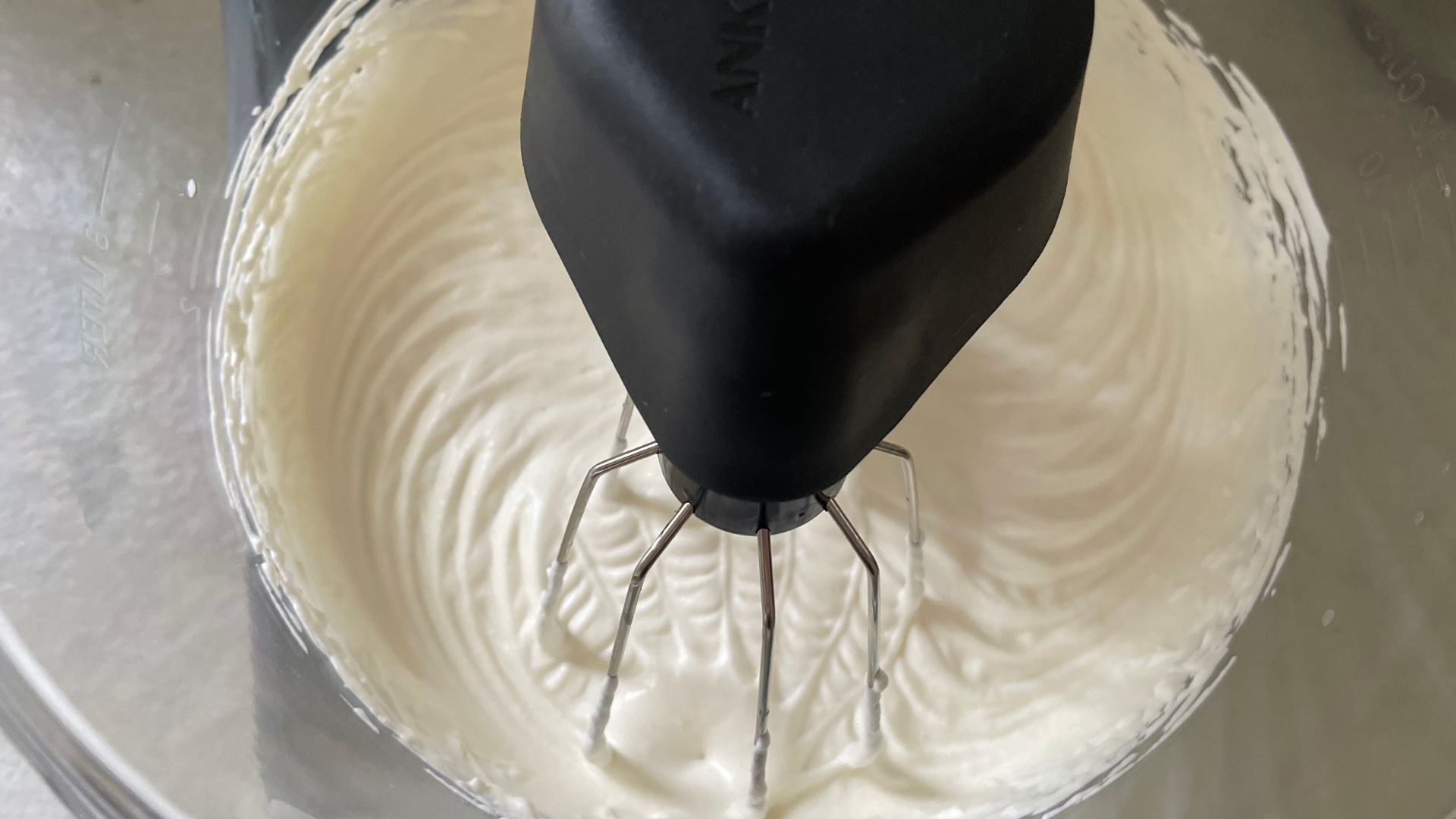
I re-employed the use of my plastic whisk bowl and balloon whisks for whipping cream. The results were speedy because these two whisks are really effective at incorporating air into the mix. In just two minutes, I could take the above picture. You can see that the cream has thickened enough to leave a whisk trail in the wake behind each beater.
I tested out the same process with vegan cream, which normally is slower to thicken up than dairy. The Ankarsrum was the most effective stand mixer when it came to thickening up the cream. Even my 500ml batch was thick and fluffy in three minutes. My only caveat is that, as with cake mix, the results seem to be quicker and more consistent on bigger batches.
Test 4: cookies

I love making cookies, so I'll take any excuse to whip up a batch of dough (although, it's often hard to justify when I've just baked a family's worth of chocolate cake, bread, and whipped cream). However, even with the most basic version of the Ankarsrum, you'll get single-wire cookie whisks. This was the gift I needed to grant me some cookie-making opportunity.
The whisks were great at beating my butter and sugar together into a light and fluffy mix. As I added flour, vanilla, baking powder, salt, and eggs to the mix, I could see it thicken. However, when I added my chocolate chips, some were caught between the whisks and the bowl, flicking pieces of the dough onto the counter. I put the lid on top to keep things tidy and it did the job. Make sure you do this and you'll make delicious dough.
Cleaning
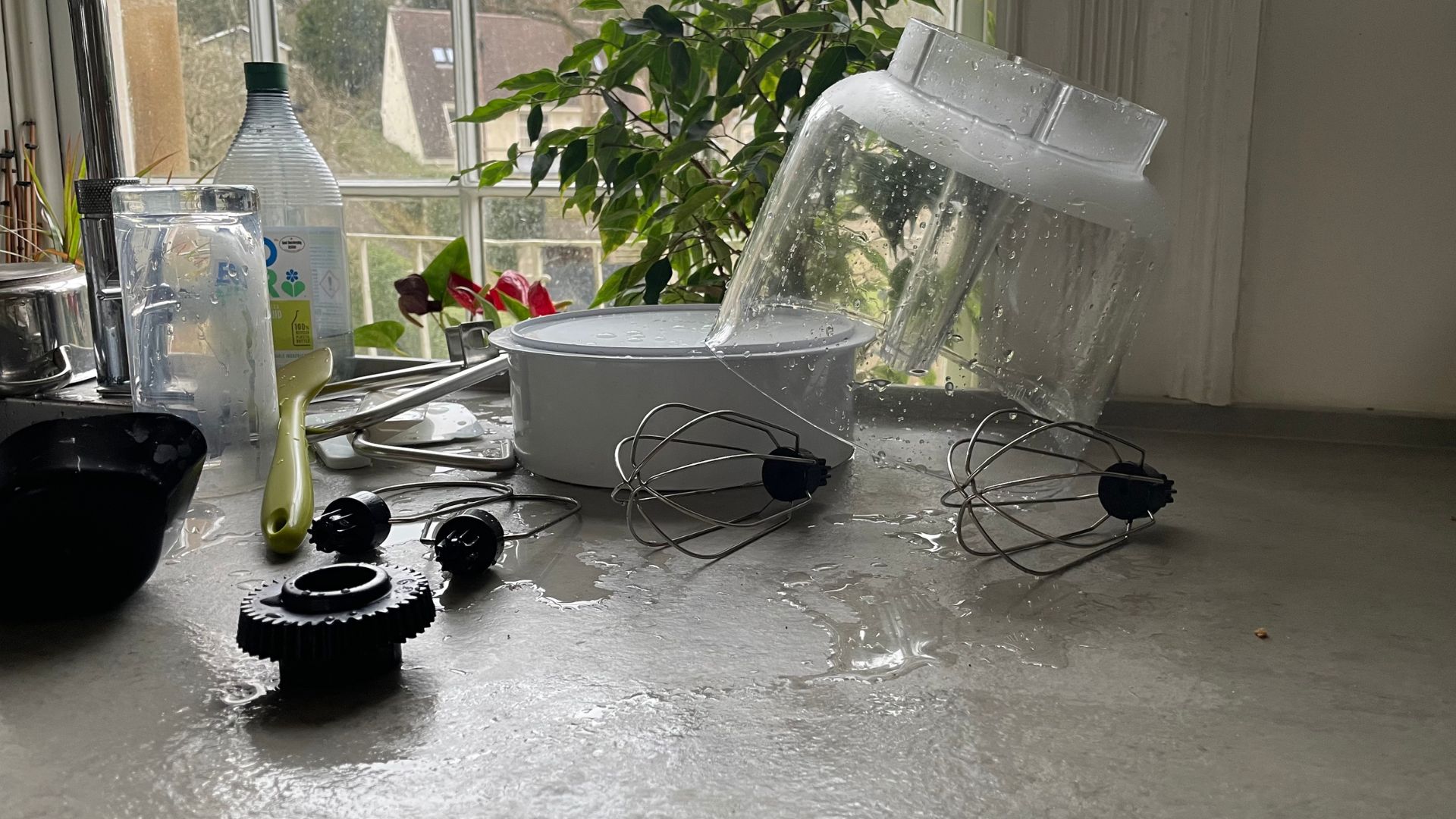
All the parts are dishwasher safe, which makes washing up extremely easy. The Ankarsrum comes with a seven-year warranty and I have no doubt that it will survive all of these in top condition, even with heavy use. However, if you want yours to last even longer, you can wash these parts up by hand. You can see that's exactly what I did. All I needed was warm, soapy water and the parts came back to their original sparkling form.
The main body of the Ankarsrum wipes clean with a damp cloth. Of course, this shouldn't be submerged underwater, but you won't need to. The bowl and cover stay really clean if you use them correctly.
How does it compare?
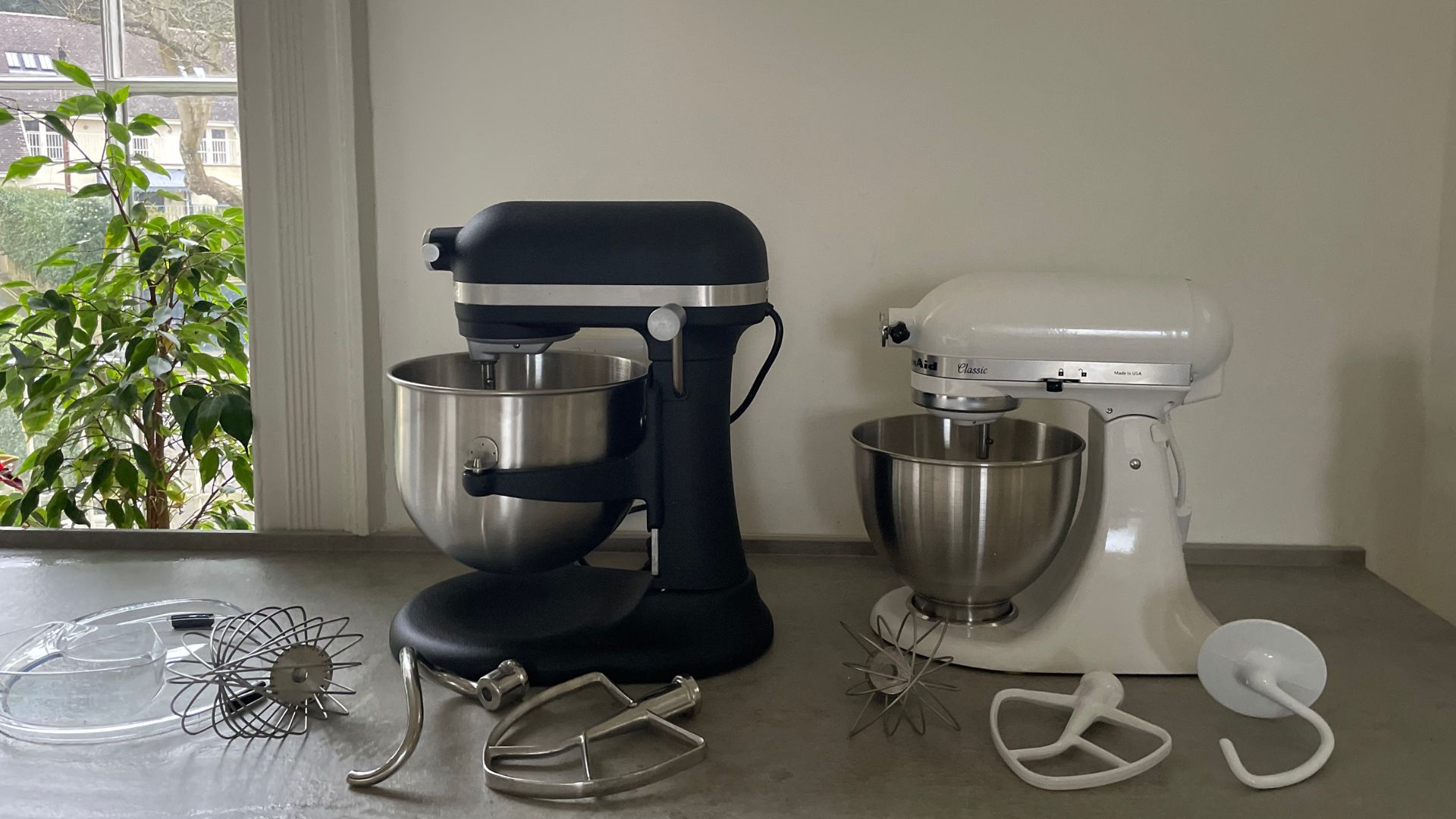
There are two comparisons that you'll need to make when you're thinking about how the Ankarsrum compares to other stand mixers and these will depend on what you're after.
If you want a professional stand mixer for big batches, you'll need to look at the KitchenAid Artisan Bowl-Lift Stand Mixer. You can pick this up in a 5.6 or 6.6-litre capacity, both of which are smaller than the Ankasrum's 7-litres, but they'll give you room to make bigger batches of cakes, breads, and cookies in. The KitchenAids both sit around similar price points and they follow more traditional functions and set-ups, which suits more traditional bakers. Whilst I wouldn't fault either, I found that the Ankarsrum was superior at making use of all parts of the bowl. There was never a flour puddle or patch left untouched. Only when I was making smaller batches did I feel that the Ankasrum wasn't quite delivering on its perfect results, but apart from that, this was faultless. I'd be tempted to choose it for more serious bakes.
If you want something a little less serious, I don't blame you. For all the brilliance that the Ankasrum's many parts and spins delivers, it can be intimidating for beginners. I understand that can be a block (along with the size and price tag), so it's worth taking a look at two other options. On one hand, you have the KitchenAid Classic. This is a basic stand mixer that strips the appliance into its three key parts: whisking, mixing, and kneading. You don't get the same nitty-gritty levels of control over what you make and bake, but for simple tasks, it doesn't matter.
KitchenAids are still expensive though, so if you want a smaller stand mixer and a smaller price tag, the Kenwood GO is the stand mixer for you. This is only 30cm tall, it's lightweight and compact too. I tested it on all the same tasks as the KitchenAid and Ankasrum and I don't think you'd be able to taste the price or size difference. It's an easy swap to make.
Should you buy it?

If you're a serious baker who wants a versatile stand mixer, I think you'll be hard pressed to find a model that's better than this one. It covers batch baking, niche tasks, and tough doughs incredibly well. The large footprint and extensive collection of accessories might put of new bakers, but if you're committed, it's worth the splurge.
How we test
Testing stand mixers is easily my favourite part of the job—I get to bake and call it work. As an avid baker of cakes, breads, and pastries, my passion ensures that the tests I conduct are thorough and reliable. Each stand mixer is put through its paces repeatedly to ensure a fair test.
To maintain consistency, I follow a set of standardized tests for every model. I start by making chocolate cake batter to assess the creaming, mixing, and beating functions. Then, I move on to brown bread, which thoroughly tests the dough hook. Finally, I use the whisk to whip both regular and vegan cream, giving me a clear picture of the mixer’s power and versatility.
Beyond these standard tests, I keep the stand mixers in my kitchen for everyday baking to identify any practical quirks or challenges you might encounter at home. Once I’ve thoroughly assessed a mixer, I compare it with other models, considering its value and identifying who it’s best suited for. My goal is to help you decide if it’s the right choice for you—or guide you toward a better option if it’s not.
You can find out more about how we test stand mixers on our dedicated page.
Sign up for the woman&home newsletter
Sign up to our free daily email for the latest royal and entertainment news, interesting opinion, expert advice on styling and beauty trends, and no-nonsense guides to the health and wellness questions you want answered.

Laura is woman&home's eCommerce editor, in charge of testing, reviewing and creating buying guides for the Homes section, so you'll usually see her testing everything from the best dehumidifiers to sizing up the latest Le Cruset pot. Previously, she was eCommerce editor at Homes & Gardens magazine, where she specialised in covering coffee and product content, looking for pieces tailored for timelessness. The secret to her heart is both simplicity and quality. She is also a qualified Master Perfumer and holds an English degree from Oxford University. Her first editorial job was as Fashion writer for The White Company.
-
 Dr Amir Khan reveals the 'life-saving' device everyone over 40 should have at home - and it costs under £20
Dr Amir Khan reveals the 'life-saving' device everyone over 40 should have at home - and it costs under £20Dr Amir Khan appeared on ITV's Lorraine to share his insights on how to reduce the risk of dementia with a simple blood pressure monitor
By Kat Storr Published
-
 Katie Holmes proves that playful floral tailoring is the best alternative to your favourite occasionwear dresses
Katie Holmes proves that playful floral tailoring is the best alternative to your favourite occasionwear dressesThis polished option is perfect for weddings, garden parties, and everything in between
By Molly Smith Published
-
 Eva Mendes' cool navy summer dress is Parisian styling at its finest – and her designer bag is top of our wishlist
Eva Mendes' cool navy summer dress is Parisian styling at its finest – and her designer bag is top of our wishlistThe actress wowed in head-to-toe Stella McCartney
By Caroline Parr Published